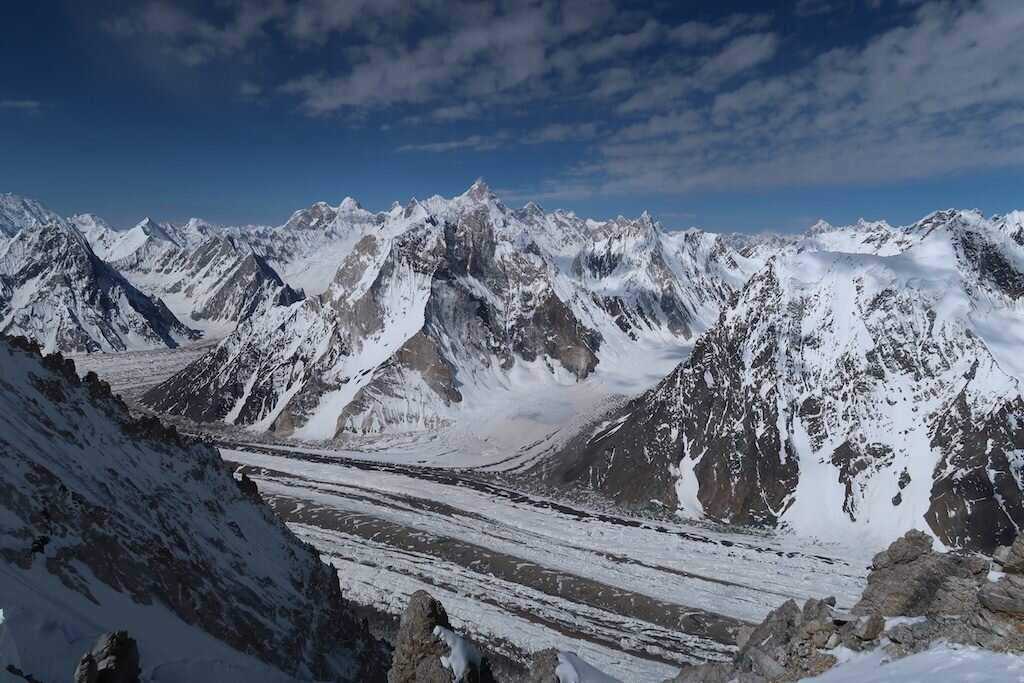Full Rotation
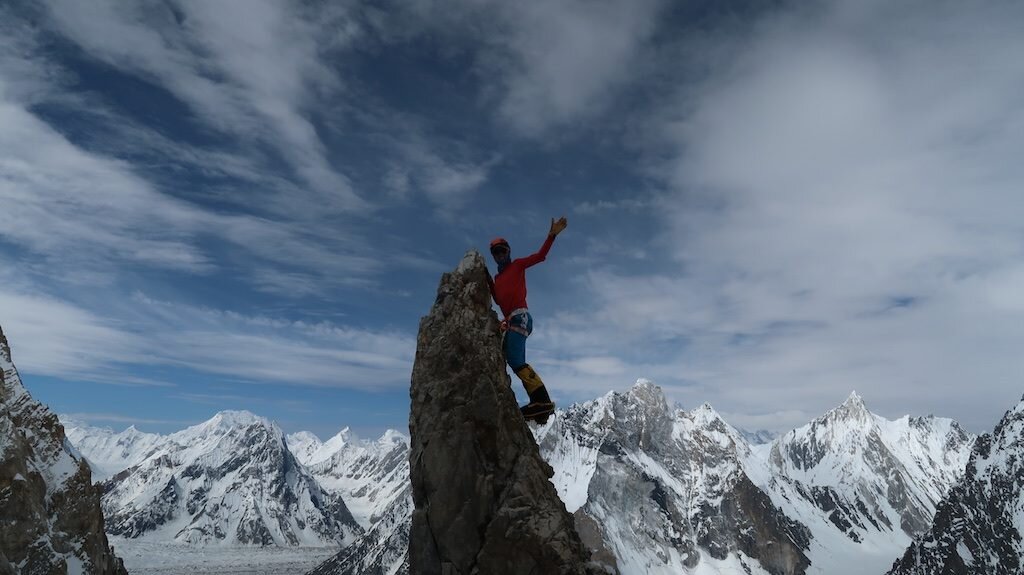
In order to climb any truly huge (let’s say over 23,000 ft)mountain, it’s essential to perform “rotations” where climbers exposethemselves to the harsh higher altitudes and then retreat to recover. Capitalizingon good weather, good health and a “get after it” attitude, I have completed myacclimatization (and the accompanying task of getting all of the right gearcached in the right places) in as fast a time as I have ever done. Now I’m abit tired, deservedly so, but resting, eating as much as possible and waitingfor the right opportunity to summit Broad Peak, the world’s 12thhighest mountain, without supplemental oxygen.
So here’s what we did: Arrive in base camp and take two restdays. Then touch camp 1, which is about 18,000 ft and return to base camp.After two rest days, we returned to the mountain with heavier packs and climbeddirectly to camp 2, about 20,000ft. The following day we ascended to camp 3(high camp) at 23,000 ft. I climbed a bit higher without a pack as this aids inacclimatization. The day before yesterday, we descended all the way to basecamp, caching supplies in camp 3, camp 2 and near the base of the mountain.
The route starts with an awful shortcut from K2 base camp to the bottom of Broad Peak. Because of the amount of recent snowfall, this section is a convoluted mess of glacier and moraine with many hidden crevasses. It’s rapidly melting out (which is nice if you prefer seeing your crevasses), but bad because every time, the glacier looks different making routefinding more challenging. It’s a maze of ice towers, rocks, bottomless snow, icy ponds, and weak snow bridges waiting to break and plunge you into icy creeks. The base of the route is a narrow snow gully next to a large rock cliff from which there is rockfall…best to keep moving. Passing over a few giant crevasses in the initial gully, the route weaves to the right up a broad rock and snow face. Camp 1 is located on a ridge, one that will be followed to gain access to the upper mountain. The route continues to be mixed snow and rock to spectacular camp 2, where Concordia and the central Karakoram make up the view, not to mention K2. For me, climbing from camp 2 to camp 3 was where things started to get difficult. For the most part, the climbing was technically easier snow climbing, but the effort to gain each meter really set in. There were a couple icy sections which required the extremely demanding technique of “front pointing” (using your crampons to stand on your toes only), which even at sea level can be the calf raises from hell. Though our pace slowed, our group was good natured and enjoyed a fine but demanding day of climbing together.
Climbing to 23,000 ft (higher than any mountain outside of Asia) is quite an accomplishment. Camping there is another kind of hell. I felt good overall but my stomach hasn’t been consistent up super high. For dinner and breakfast in total, I had a tiny bit of Ramen noodles, mostly broth, a bite of rice, an energy gel and a few sips of Coke. I’ve been eating great in base camp and during the climbs, so I’m going to try to keep it up and just go by feel up super high. This visit, I barely ate in camp 3 but at least I didn’t puke and lose my hydration, electrolytes and energy as in my aborted K2 summit attempt in 2017.
The fast acclimatization schedule is a pretty interesting concept. The lure of the strategy is obvious…it’s extremely challenging to be at altitude. It’s hard to describe just how weak, sick, apathetic, and even devoid of your personality you can get. Especially when acclimatizing to a new higher altitude, the process is typically painful and difficult. Every moment at altitude takes something out of you. Keep in mind that no permanent human settlements exist as high as our base camp and base camp is pretty much heaven compared to high camp on these mountains.
Who wouldn’t want to accelerate the acclimatization process? Well, just like endurance or strength training, the key comes in balancing stimulus vs. recovery. If you are strong enough, you can climb high to expose yourself to altitude, then retreat quickly to avoid its destructive effects. But buyer beware: if this were truly an easy shortcut, then everyone would do it. Funny how you keep seeing these professional athletes and Olympians training 1000+ hours per year instead of opting for 20-minute high intensity interval workouts or the latest supplement to reach their goals ;-) In my case, this rotation strategy worked very well this time but it required excellent fitness and a lot of experience at altitude to know this was beneficial exposure and not something dangerous. I still have an extremely hard task ahead. I’ll need good health, weather, coordination with other teams, and a ridiculously big effort to reach the summit.
On to more pretty pictures!
-

I've long fantasized about paragliding off the world's highest peaks. What more stylish way to get back down? Here, a German climber and pilot whooped and hollered all the way down to base camp in about 10 minutes


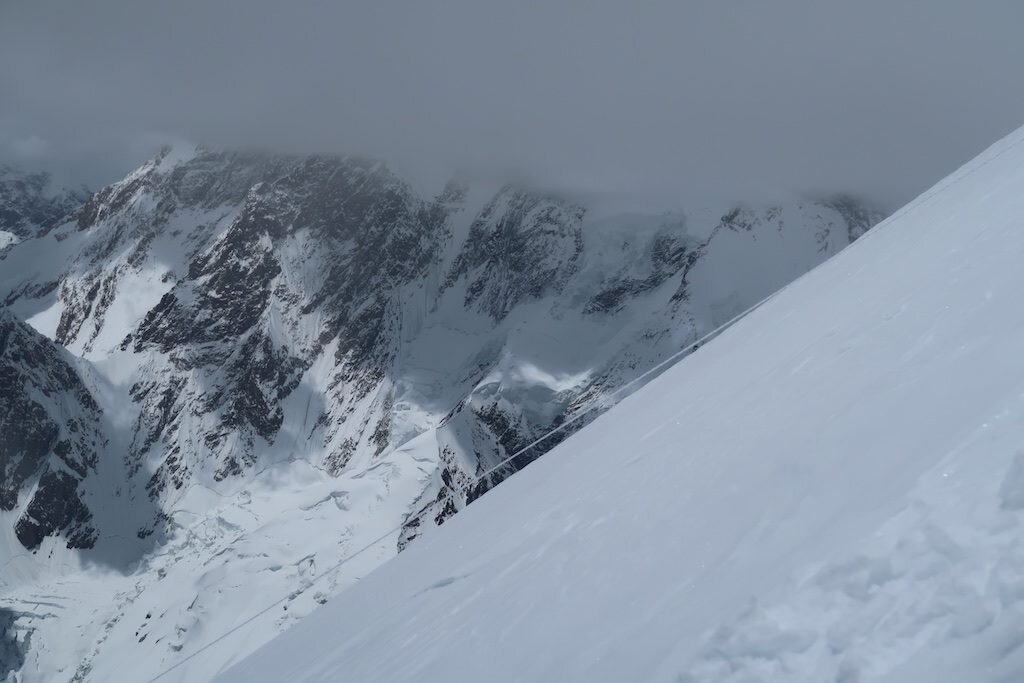
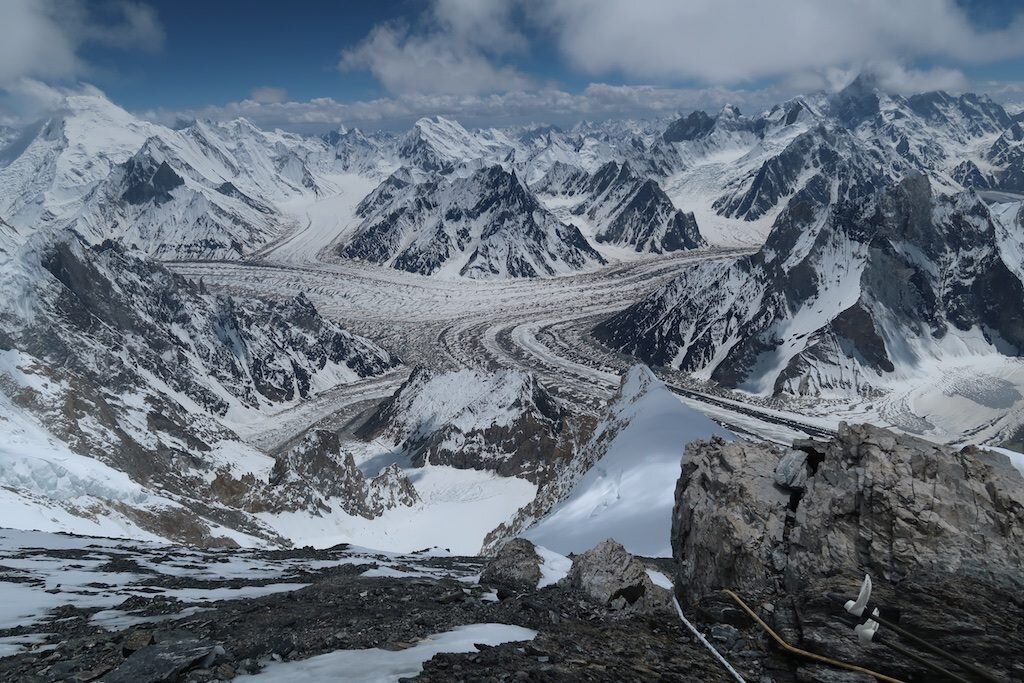


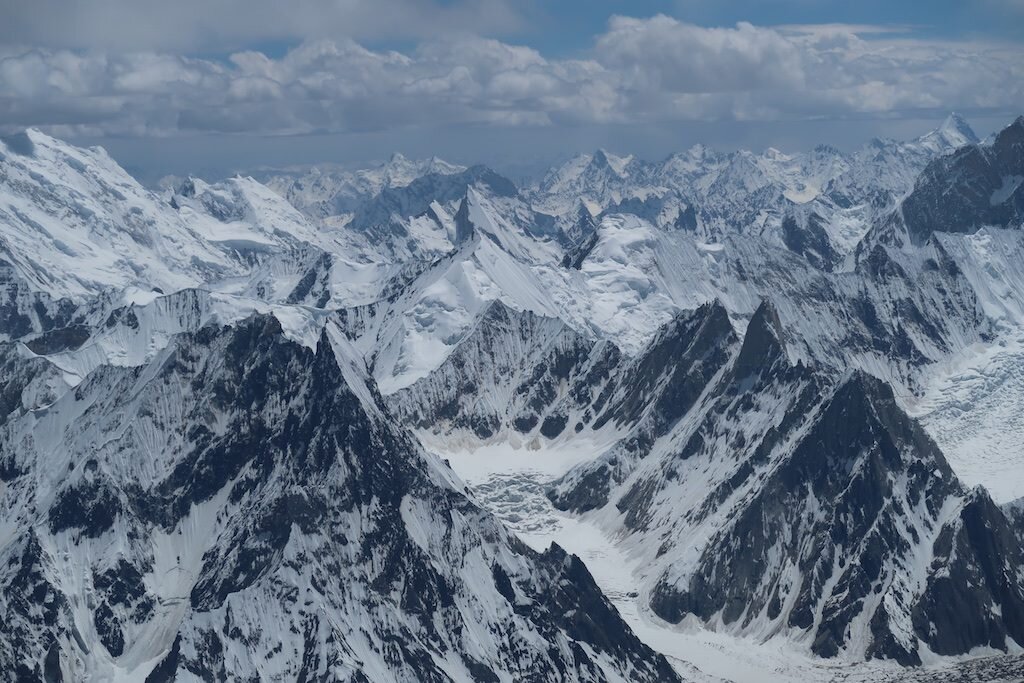




-
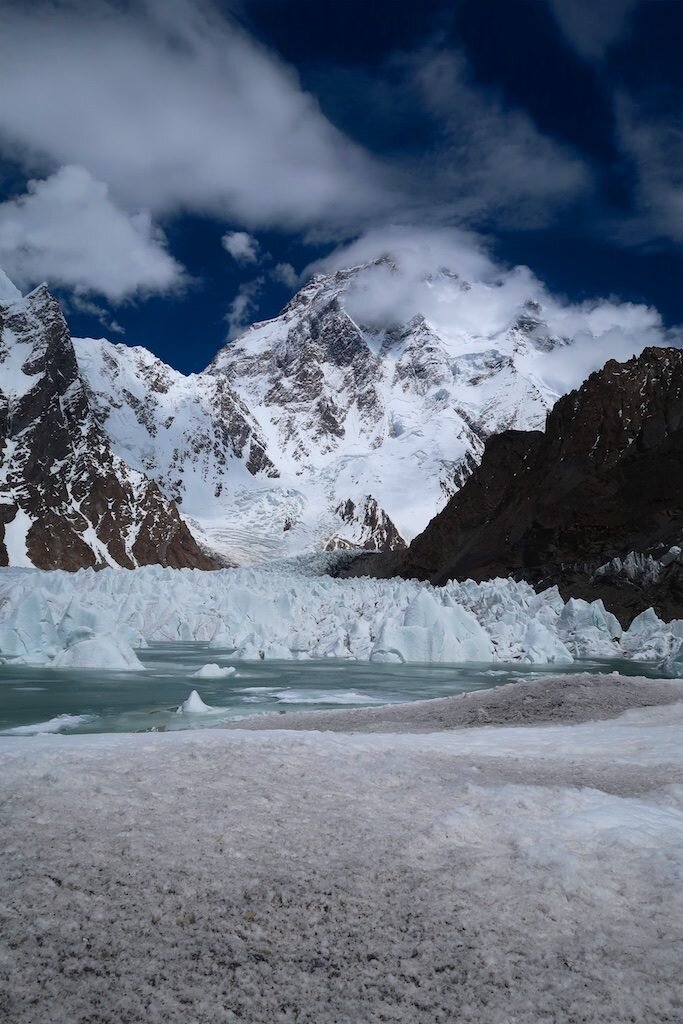
A supraglacial lake below K2












